#Mongolian Empire
Explore tagged Tumblr posts
Text
Roman empires is overrated, true homies know the Mongolian and Tibetan empires were peak
#Tibet#mongolia#Mongolian empire#empire#rome#roman empire#history#asian history#europe#european history#Asia#why am I making this weird ass post one of these isn’t even well known#Tibetan empire
10 notes
·
View notes
Text
Russian-Ukraine War Part 4: The Birth of Russia
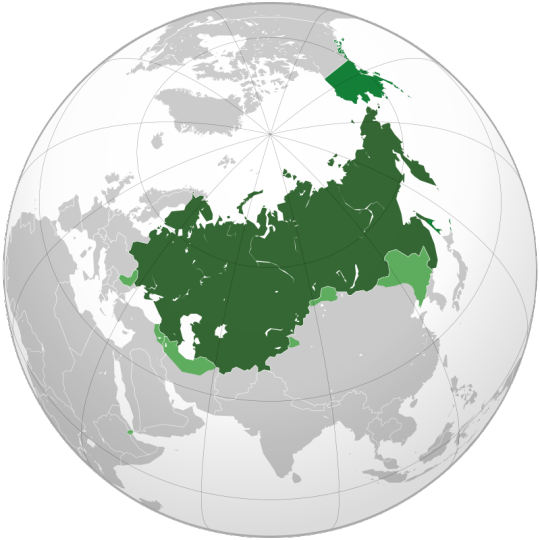
So Russia is big. It's like one of their defining traits, vodka, art, brutality, colonialism, communism, and being massive. But did you know that once Russia was once…not so big? Let's do some history.
So the Mongolian Empire was a brutal genocidal engine of conquest but if you survived the initial invasion, it wasn’t so bad by the standard of brutal imperialists, the Mongols were big on religious tolerance, cultural integration and above all trade. So the Russians found themselves suddenly connected to Central and East Asia through their Mongol overlords, and Russia for the first time in Russian history, it is as connected to East Asia as it is to Europe.
The Mongolian Empire was great at conquest but struggled a lot with the ruling, and it probably won’t surprise you that it broke into 4 smaller states shortly after the death of Genghis Khan, located in the Middle East, China, Mongolia and Russia Respectively. The one that concerns us is the Golden Hoard, the Russian based Mongolian state, who were called “Tatars” by the locals.
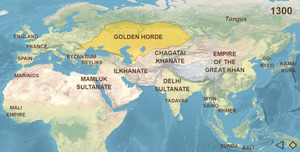
The Golden Hoard wasn’t an Empire that spent most of their time breathing down your neck and setting major policies in their capital, instead they ruled indirectly via tributary states. They would basically allow your kingdom to exist and kinda do its own thing as long as you paid your taxes, and one special boy kingdom was allowed the honor of collecting the taxes. The special boy of our story is the Grand Duchy of Moscow, which will overtime be upgraded to the Principality of Moscow, to the Grand Principality of Moscow as they steadily get more and more powerful, using the privileges they got as the Mongol’s special boys to eventually grow their military and economy.
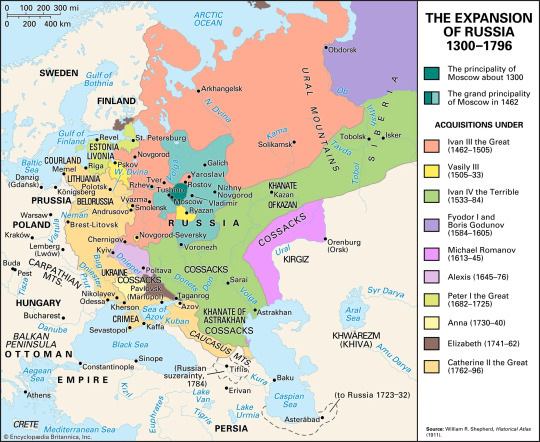
Eventually they were able to push back the Mongols (assisted by the Golden Hordes constant civil wars), and by the time of Ivan the III aka Ivan the Great, the state was independent and a massive nation. Ivan III is kinda seen as the first independent Ruler of Russia, where Russia exists in its own right and not just as a Mongolian Tributary state. Ivan’s grandson, Ivan the IV, aka Ivan the Vasilyevich, aka Ivan Grozny, aka Ivan the Terrible eventually decided that the Title of Grand Prince wasn’t quite good enough and so it was he who formally turned the state into an Empire, giving himself the title of Tsar, after brutally conquering all the people around him. And so the Russian Empire was born between Ivan the Great and Ivan the Terrible, go figure.

(Ivan the Terrible, Very stable man)
So Ok, Russia is an independent Empire, but under Ivan the IV it becomes more than that, it becomes the Orthodox State. Let me walk back a bit. Christianity first super huge split was in 1054, where the Eastern Greek Speaking Orthodox Church broke apart from the Western Latin Speaking Roman Catholic Church. The Catholics have the Pope, who manage to establish himself as a religious power greater than even Kings, while the east had the Patriarch, whose power was limited by the Emperor? What Emperor you say? Well time to talk about the Byzantine Emperor
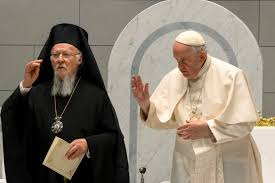
Patriarch (left) Pope (right)
So the Byzantines are the dominant supreme cultural power of the East right? Well by the time of the Mongols, not so much. The great city of Constantinople was sacked in 1204 by the 4th Crusade, in one of the greatest own goals in history, and the Empire was in a state of decline ever since. And I mean actual decline, not Edward Gibbon (your decline is almost a thousand years) decline, which was pretty upsetting for the Rus, the other great Orthodox power (Ok I see you Bulgaria and Romania, you’ll get your own episodes another time calm down), and as Byzantine declined, Muscovy keep taking on more and more of the role as “big Orthodox power of the east”. But the striking blow came when Constantinople fell in 1453 to the Ottoman Empire under Mehmed the II aka Mehmed the Conqueror, bringing a final end to the Byzantine empire…ok there were a few splinter states but Mehmet gets them 20 years later so once and for all Byzantines are gone.
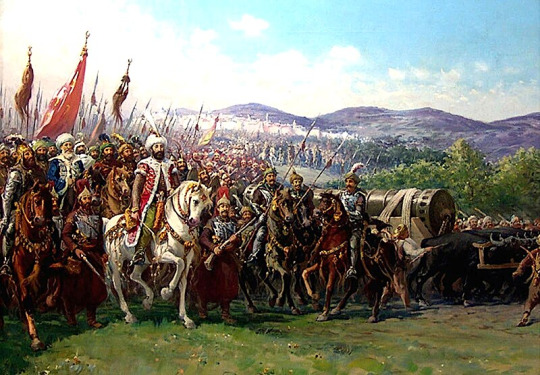
(Mehmet II preparing to destroy Byzantinium)
SO I cannot empathizes enough how much of a blow this is to the Orthidox World. The Byzantine Empire was THE Orthidox power for over a thousand years, it was the center of the Orthidox world.Consantinople had been the center of the Orthodox church since Constantine himself, it's like Rome turning Muslim or Mecca Christian, like this is a theological crisis. However, the Grand Principality of Moscow was eager to take on the role of center of the Orthodox Church, and Ivan the Great started to call Moscow “The Third Rome” to succeed the Byzantines as the Byzantines had “succeed” the Romans (despite being Roman…look i never said it is smart). This is why Russia’s coat of Arms is the two headed eagle of the Byzantines. His grandson Ivan Grozny unified the Principality into a strong centralized autocratic state through the power of brutal oppression and secret police, creating the Russian Empire. Later the Patriarch would relocate there, effectively the closest thing to the head of the Orthodox church, making Moscow the new center of the Orthodox faith.

As the "Third Rome" Russia wasn't just an Empire, it had a divine mandate to take territory and spread the Orthidox Faith. The notion of this Russian style Manifest Destiny is going to come up again in this series, and it has never completely left the Russian National identiy.
Ivan took the title of Tsar which means Caesar as in Emperor. As an Empire rather than a Principality, the “Divine Mandate” of Russia became to serve as the protector of the Orthodox Church, to reunify the old Kievan Rus, and restore Constantinople. Like most empires, including the Mongol, the Russian Empire is based on the notion that they have a divine right to rule over everybody else. This dream was put aside for the Time of Troubles, a civil war so horrific that it makes Game of Thrones look peaceful, but after that confusion Russia was ready to go (this is where the Royal family goes from Ruik to Romanov) This is not going to be an extensive look at all of Tsarist Russia, just the stuff which I think is important to understand for Ukraine. Colonization, the Tsar and Serfdom.
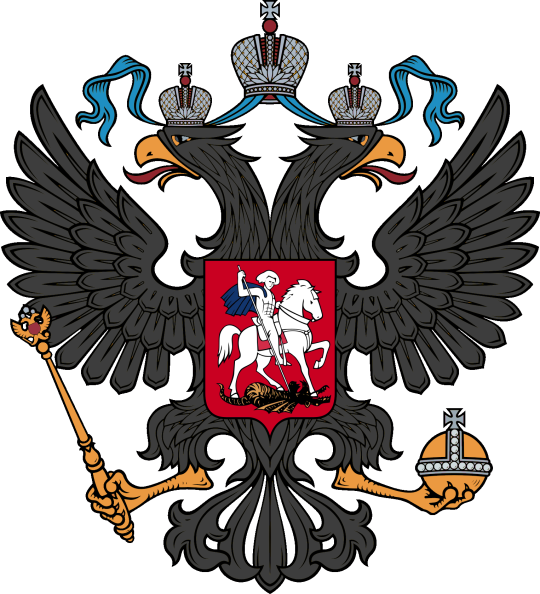
#Neglected Historical Fact#Russian History#Ukranian History#Russia#Ukraine#Golden Hoard#Mongolian Empire#Byzantine Empire#Orthidox CHurch#Great Schism#Ivan III#ivan the terrible#Ivan the Great#Third Rome#Tsar#Imperial Russia#Time of Troubles
7 notes
·
View notes
Text
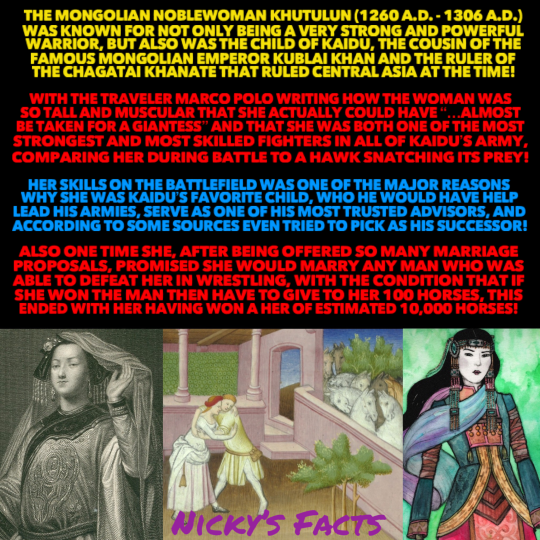
Khutulun was proving that women can be stronger then men 100 horses at a time!
🐴🇲🇳🐴
#history#khutulun#mongolia#kaidu#chagatai khanate#womens history#central asia#mongolian empire#princess#historical figures#strong women#medieval period#mongolian history#girl power#warrior woman#womens history month#kublai khan#fit girls#female empowerment#princesscore#horses#athletic women#medieval history#royalty#wrestling#khanate#military#nickys facts
8 notes
·
View notes
Text
Mongolian Archery/Headcanons
- In the Middle Ages, Mongolian archery held great military significance. The earliest recorded bow shot was made in 1226 as a stone inscription, by Yisüngge, Chinggis Khan's nephew, achieving a remarkable 335-fathom (about 575 yards) shot.
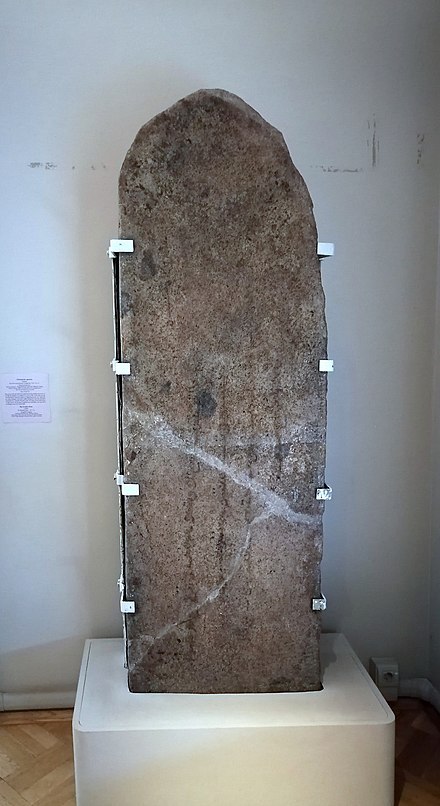
Stele of Yisüngge.
- Mongolian men were trained from a young age to become excellent marksmen, and archery played a crucial role in their military prowess.
- According to the Franciscan friar John of Plano Carpini, Mongols started shooting from the age of two, and they displayed excellent marksmanship skills from childhood to adulthood.
- Mongolian men dedicated much of their time to crafting their own arrows, which had diverse heads made from materials like bone or iron.
- The powerful tension of the bow caused it to spring back when unstrung, a challenge often mentioned in Mongolian epics as the heroic test of stringing a powerful bow.
Traditional Mongolian Bows and Arrows:
- Under the Qing Dynasty (1636–1912), all bannermen were required to undergo archery training. The military compound bows were typically about 1 1/4 meters (four feet) long, but longer bows up to two meters (six feet) were used for hunting.

- A grown man was required to handle a minimum pull weight of about 37 kilograms (80 pounds), while those participating in the imperial hunt needed to manage around 60 kilograms (133 pounds).
- Training included shooting from a standing position and also while galloping on horseback. Archers held the reins in their left hand or mouth while using their right hand to pull back the bow.

- The bows were constructed using a core made from goat horn or deer antler, covered with wood (larch, elm, or bamboo), and wrapped in animal tendons. The bows were powerful and required skill to string properly, making this task a distinguishing test of a hero's strength in Mongolian epics.
- The bowstrings were made of silk threads or leather wrapped in tendons, and arrows were crafted from materials like pine, birch, or willow. Arrowheads were made from deer antler, bone, or iron.
- Well-constructed compound bows and arrows were highly prized and fetched high prices. While powerful war bows were used for large game, simpler bows made of strips of fir or larch were used for small game.
Traditional Archery Techniques
- Mongolian archers used a unique technique of placing the arrow on the right, or outer, side of the bow. The arrow was held with the thumb and forefinger, and the bowstring was drawn with the thumb, protected by a heavy leather or polished stone ring.

- To release the arrow, the archer rolled the string off the ring. Skilled archers were trained not only to shoot from a standing position but also while galloping on horseback, using their right hand to draw the bow and holding the reins in the left hand or mouth.
Archery Competitions and Targets
- Archery competitions were an important aspect of Mongolian culture during religious rituals and Naadam games.
- In military competitions, the targets were made of sheepskin stretched over wooden frames or wooden balls placed on poles about 1.7 meters (5.5 feet) high. They were sometimes called "mangas" or monsters, as the Mongols found it disturbing to target human or animal figures.
- In Naadam games, archery was practiced using large, blunt ivory heads. The most common target was a pyramid or line of sur, made of leather straps rolled into a cylinder and filled with oak bark or leather, which the archers were required to knock over.


Decline and Revival of Archery
- By the late 19th century, firearms became more useful in hunting and warfare, causing a decline in archery competitions.
- Among the lamas of Khüriye (modern Ulaanbaatar), archery was replaced with shooting astragali (shagai) at a distance of 3 meters (9 feet) using horn or ivory bullets (ankle of sheep and goat) flicked by the middle finger from a wooden plank. This is because, due to their religious beliefs, they could not touch a weapon.

This is my own shagai set by the way!
- In the early 20th century, efforts were made to revive archery as a sport. In 1922, the army Naadam in Mongolia and in 1924, the Sur-Kharbaan (Archery) games in the Buryat Republic became annual events, marking the resurgence of archery as a recreational sport.
Changes in modern Archery
- In modern times, traditional Mongolian bows are still used in Mongolia, with archers using the traditional thumb technique.
- However, among Buryat and Inner Mongolian archers, European-style professional model bows and Western shooting styles have been adopted.
- The National Holiday Naadam rules now involve each man firing 40 arrows at a distance of 75 meters (246 feet), and women shooting 20 arrows at a distance of 60 meters (197 feet).
Headcanons
Mongolia obviously takes great pride in his cultural heritage and traditions. Archery is an integral part of his history and has been for centuries. It’s a skill that takes years to perfect - to become proficient one needs to develop both physical and mental control.
I think making bows would be a hobby of his! Not only does it keep him connected with his culture and history - as I previously mentioned, it's a skill. Bow-making/archery not only is a creative hobby, it's a physical and mental one too because of the patience and precision that is needed to create the bows/arrows, and of course, the archery itself is a mental and physical challenge!
The process of making his own bows can be both therapeutic and challenging at the same time. It requires a lot of patience and attention to detail while working with natural materials that may require specialised tools not commonly found today.
Nevertheless, he finds it to be an incredibly fulfilling experience to create something entirely by hand that is also functional and aesthetically pleasing. He enjoys painting/putting designs on them and he has quite a diverse set.
So really, bow making and archery for him:
Helps him stay in touch with his culture and history
A creative hobby
A hobby that requires mental fortitude/patience
A physical hobby
He's glad to have finally seen a resurgence and celebration of archery in his country after the rise of firearms kind of depleted it's use/popularity. It is now seen as a recreational sport in Mongolia and he treats it as a recreational sport too.
He takes pride watching participants demonstrate their skills during the Naadam Festival and other competitions where they strive to shoot targets from quite a distance away with incredible precision. The sound of the bowstring when an arrow releases - that twang sound- never gets old for him!
When he watches the younger generation take up archery, it does indeed remind him of his own experiences learning the skill as a child too.
I must say, he's still got a few tricks up his sleeve when it comes to horseback archery - even after all these years! At times, he still participates in local competitions just for fun (jock™)- he loves the the thrill of hitting a target while galloping alongside a horse.
It's definitely not something you can master overnight. Horseback archery requires an immense amount of control as well as skill from both the rider and the horse. Nevertheless, given his background as someone who understands strategy and has trained with bows since ancient times- participating is always an exciting prospect.
Sometimes he gets the chance to assist in judging in some archery competitions, which he always enjoys. He also enjoys reading about archery from different cultures too!
Of course with all of his responsibilities, he doesn't do this as often as he would like. However if you ask him about it, he'd probably do a bit of an info dump on you.
In essence, archery provides the perfect balance of discipline, creativity and physicality that he personally finds very fulfilling. Plus, it’s just plain fun!
#hetalia#aph mongolia#hws mongolia#Hetalia Mongolia#hetalia world stars#hetalia world series#hetalia world twinkle#historical hetalia#Aph Asia#Hws Asia#aph east asia#Hws east Asia#hetalia headcanons#Hetalia headcanon#OC Baatar Batbayar#Mongolia#Mongolian history#mongol history#Mongol Empire#Mongolian Empire#horseback archery#Archery#Mongolian Archery
39 notes
·
View notes
Text
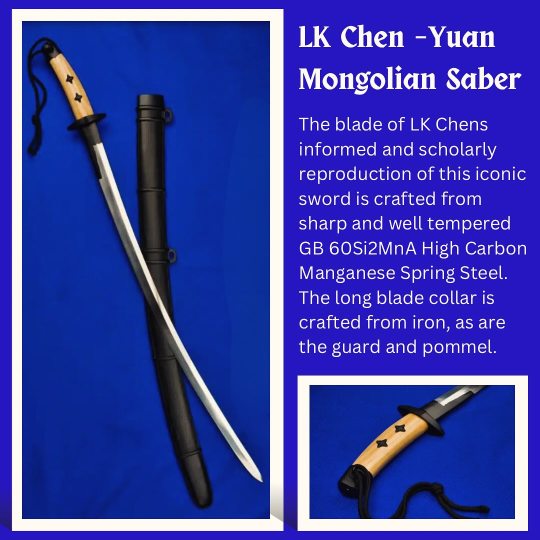
Yuan Dynasty 1271-1368 was a time when China was a part of the bigger Mongolian Empire spanning from the eastern coast of China all the way to part of Europe today. This is a time of international travel via land and sea, the time when the Italian traveler Marco Polio visited China and years later wrote about his adventures. This a time when people from Eurasia and Arabic countries come to live, work and settle in China and their influence can be seen in this sword design dating to the time of the Yuan. The Mongolian saber has the characteristics of Eurasian Steppes curved saber and was a milestone in Chinese weaponry where curved swords with characteristically saber like blades were introduced to the Chinese. The sword was ideal for quick strikes from mounted cavalrymen and well capable of inflicting deep cuts and slashes from horseback.
LK Chen – Yuan Mongolian Saber in stock and available to order now
#Kult of Athena#KultOfAthena#LK Chen#Yuan Mongolian Saber#sword#swords#Dao#weapon#weapons#blade#blades#Chinese Swords#Chinese Weapons#Asian Swords#Asian Weapons#Yuan Dynasty#13th century#14th century#Mongolian Empire#saber#GB 60Si2MnA High Carbon Manganese Spring Steel#Battle Ready
6 notes
·
View notes
Text

2 notes
·
View notes
Text

Mongolian Empire eheh
8 notes
·
View notes
Text
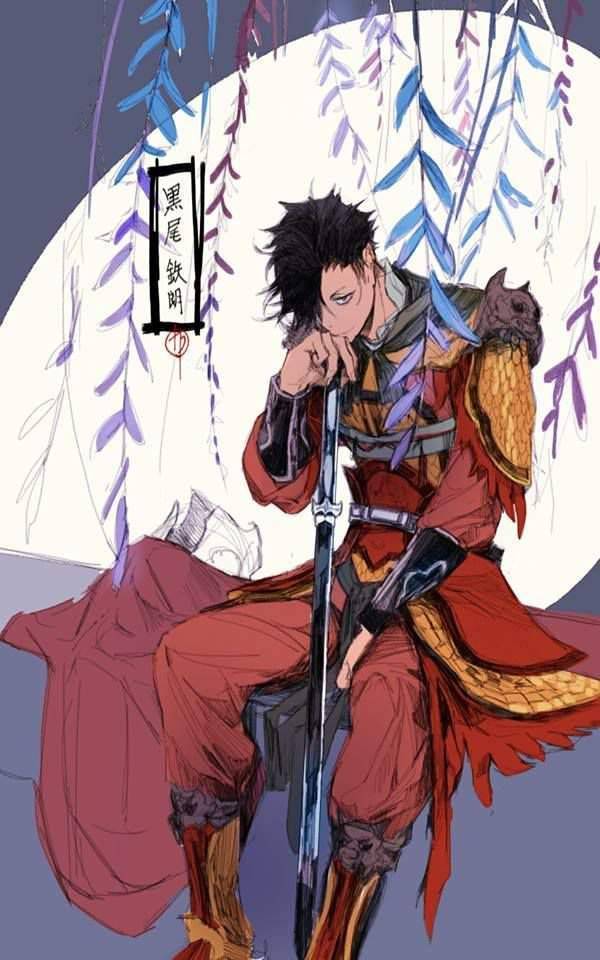
ᠶᠡᠬᠡ ᠮᠣᠩᠭᠣᠯ ᠤᠯᠤᠰ
#mongol#mongolia#mongol empire#mongolian#mongolians#mongolian empire#genghis khan#genghis#khan#ᠶᠡᠬᠡ#ᠶᠡᠬᠡᠮᠣᠩᠭᠣᠯᠤᠯᠤᠰ#meIRL#IRL#2023#elections2024#khia#kenny tran#tran trong kha#kha#1988#december 1st#december 1st 1988#12011988#reincarnation#manifestation#vietnam#song be province#song be#gods#pantheon
6 notes
·
View notes
Text
The Mongolians have definitely the best PR among empires. The ratio of people slaughtered vs simpathy generated is crazy. And I fall for it, completely.
0 notes
Text

0 notes
Text
Time Travel Question 61: Middle Ages and Much Earlier
These Questions are the result of suggestions from the previous iteration.
This category may include suggestions made too late to fall into the correct grouping.
Please add new suggestions below if you have them for future consideration.
#Time Travel#Mastodons#Megafauna#Triceratops#Dinosaurs#Pre-History#Dimetrodons#Saber-toothed Cats#Smilodon#Chinggis Khan#Genghis Khan#Mongols#Temüjin#Mongolian History#13th Century#Medieval History#Middle Ages#Athens#Ancient World#Canaanites#Ancient Religions#History of Religion#West Asia#Denisovans#Homins#Paleolithic#Prehistory#The Ghana Empire#Ghana#Ghanata
322 notes
·
View notes
Text
Get up.

* * * * * * * * * * * * * * * * * * * * * * * * * * * * * * * * *

#mongol empire#mongol history#mongolia#art#the golden horde#horse art#horse#mongolian horse#batyr#mongolian warrior#nomad#nomadic#baatar
42 notes
·
View notes
Text
Ukraine Russia ConflictPart three, the Kievan Rus
Ok so where did this conflict start? To understand that, we need to go back to the 9th century, where records are short, legends are long, and nationalists search the seas for mythological times to pine back too. Welcome to Kievan Rus, aka Ruthenian, aka Svitjod the Great, aka Svitjod the Cold, aka “The place where Russian and Ukraine both trace their origins to this point.
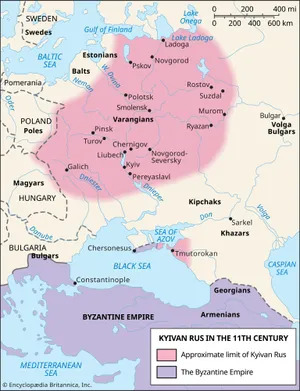
If anything, this map makes things too clean
But before we talk about the Rus, we need to talk about “Periodization”. Periodization is one of the most important concepts about being a historian, it's the dividing the past into distinct parts so it can be easier to understand. If you’ve ever studied Japanese History and are looking at the “Edo Period” or the ‘Showa Period” that's periodization, it's cutting up the past into distinct units. Periodization is in many ways necessary to understand the past, you can’t study all of it or you will go mad, but it can create these divisions in time which don’t necessarily exist naturally. A great example of this is the Early Modern Period, which historians use to highlight the development of the trends that will eventually emerge into the modern world. The slow rise of capitalism, the slow death of feudalism (except in Russia), the downfall of the hegemony of the Catholic Church, the start of mass media, the first movements towards industrialization, the rise of the first global colonial empire and the creation of modern states. It’s a very useful framework to understand the changes that happened in the 16th, 17th, and 18th centuries. However, if you are a random Hanoverian peasant, as far as you know, there isn’t any difference between 1491 and 1492. Time periods are useful but they aren’t ironclad things, like money, it's an illusion, just a functional and useful illusion.
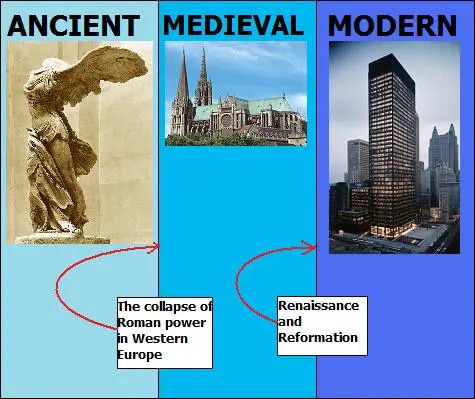
nice and simple
The reason why that tangent mattered is that when it comes to what is called “National History”. So you have a nation right, a whole new cool nation. How do you make sure everybody is part of this nation? Oh well you have public schools and in those public schools you have textbooks which teach the history of your country, how neat is that? So..where do you start? History is long and it can be difficult to teach. Like if the US finally got a national history curriculum, where would you start? People have lived in the lands of the United states since at least 10,000 BCE, do we start there? Do we start with the first European arrival in the colonies? These aren’t neat or easy to answer questions, debates over “where do we start our history” can get really intense. A lot of French history books will teach the Gauls to be like “look, these are our ancestors” but there is literally a thousand years separating the conquest of Gaul from the Emergence of France.

Utterly uncomplicated in every way
Periodization matters for our purposes because both Ukraine and Russia point to the Kevian Rus as “the start of their civilization.” and while the events of the late 9th century shouldn’t be affecting us today, apparently it does.
Another note is that the Kevian Rus is a bit hard to document due to the fact that the people didn’t have a writing system, so what we know comes from archaeological evidence and outside sources, so the make up and borders of this region is a bit hard to define with certainty but fuck it lets go.
The Kievan Rus consisted of most of central and eastern Ukraine, Belarus, and the western chunk of Russia, and as the name implies it was based in Kiev, what is today the capital of Ukraine, though it wasn’t known as the Kievan Rus at the time, it was called the land of the Rus (due to the ruling Rurik dynasty) or just “Rus''. The earliest version of the word Russia refers to the eastern half of the Kievan Rus, while the western half (what is today Ukraine) was known as Ruthenia. Since its origins are the stuff of legend, it might have been founded by Norse traders, or Norse people were invited to rule, or a bunch of Vikings settled peacefully in the area, it's a huge flame war among nationalists that isn’t relevant other than to show how much people still care about this area. The Rus was a major trade network in the area and it was more of a loose confederation of city states rather than a strong centralized empire.
Most relevant to our story is there relationship to the Byzantine Empire

Byzantium at its largest extent
TANGENT TIME. The Byzantine Empire was never called that during their time, they always thought of themselves as the Roman Empire. When Constantine the Great converted the Empire to Christianity, he moved the capital to the new city of Constantinople (famously the modern city of Istanbul). A century or so later, the empire split into East and West, with the East being seen as the greater and more powerful of the two. The Western Roman Empire fell in 476 AD, the east just…kept on going until 1453. No I’m not kidding, this matters for understanding Ukraine, those Zelensky memes were created in the legacy of Justinian the Great, keep watching. As mentioned earlier, Western Empire goes Catholic, the Eastern goes Orthodox, and after the west falls, the Eastern Roman Empire keeps on going. We call it the Byzantine Empire for…complicated reasons I might explore some day. Anyways, by the time of the Kevian Rus, the Byzantines are the supreme cultural, military and most importantly economic power of Eastern Europe, and the Rus are basically massive fucking simps for them. Like “please notice me Patriarch senpai '' simps. They even played a major role in the Varangian Guard, the personal bodyguards of the Byzantine Emperor.

The Rus were pagan at the time, a mix of the norse pantheon and the Slavic pantheon (pagan religion is complicated and deeply synthetic, I might talk about that in another post), but due to its location it always had Christian, Jewish and Muslim minorities, but it should come as no surprise that in 988 Volodymyr the I or Vladimir the Great converted the kingdom to Christianity, and due his taking a Byzantine bride and thus marrying into the Imperial family, it was of course Orthodox Christainity, thus starting over a thousand years of Orthodoxy in the region. Anyways, eventually all good things came to an end and by the 12th century it suffered the weaknesses of feudal confederacy (succession crisis) and had largely broken apart in all but name, as local feudal lords sort of went their own way. This is where the Russian/Ukrainian split first sort of not really occurs, the informal overall Rus still exist but you get these smaller Rus within it, the Novgorod Rus, the Moscow Rus, the Vladimir Rus. But the distinction between the various Rus comes to matter less than you’d expect because suddenly…MONGOLS

I really can’t empathize enough how big of a deal the Mongols were on the world stage, and probably one of the few legitimate examples of the Great Man theory of history proving true. Temujin’s abandonment issues eventually result in an empire which destroys the Status Quo of the Eurasian world, and leads to the largest continental empire in history. In the Mid 13th century, Temujin, later known as Chiggis Khan (Ghengis Khan to the West) would create the most terrifying military machine in history to that point, which would wipe out whole civilizations. So suddenly all these Mongols show up and wipe out…basically everything. The Rus? Gone. The Civilization that originated both Russia and Ukraine is now definitely gone for good. The Mongols keep the East, which becomes part of the “Golden Hoard”, while the west reforms as the Galician-Volhynian Principality, and eventually gets eaten by Poland and Lithuanian.
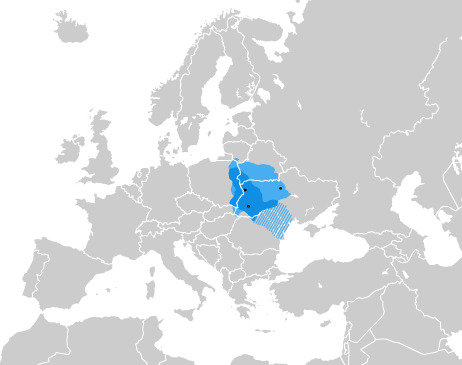
Now there have been entire series of books written about the culture, political structure and history of the Kievan Rus but what matters to us is its legacy in the historical memory of Slavic nationalists, the Rus is considered the origin point of both Russia and Ukraine, and many Russian nationalists feel that Kiev is there birthright. For Americans, this can be a bit hard to imagine because the US has never lost major territory in its history but imagine if Pennsylvania became an independent nation, and now we have all these places of national significance in another country. Hell we can take this further, Imagine if the East Coast became independent, and Texas history books talk about the founding of the US, but all of the places where the US was created are now outside there territory. Now that isn’t a justification, “oh my ancestors once lived there so I get to invade’ is stupid. Also the later Principality of Moscow and the Princedom of Galicia-Volhynia will each claim to be the “true” heir to the Rus, in a manner very similar to the Holy Roman Empire actually. This isn’t the only thing causing the conflict, but nationalist fanfiction about the origin of the Slavs still plays a major role in modern politics. This also is a big part of why Russian nationalists don’t consider Ukraine a thing, to them Ukraine is just a different part of Russia with funny accents, not their own nation with their own history. The Russian conquest of Ukraine (the first one) was presented as a reclaiming of traditional Russian land, not the taking of a foreign land.
Next time, Russian history, because nothing says “I’m going to explain the conflict in Ukraine” like spending most of it on Russia.
#neglected historical fact#Russia#Ukraine#russo ukrainian war#kievan rus#Byzantine Empire#Mongolian Empire#Orthidox Church#The Rus#Varangian guard#Vladimir the Great#Golden Hoard#Ruthenian#genghis khan
6 notes
·
View notes
Note
Where do you get all your information about mongolia from?
As a mongolian i want to know a bit more about my history n stuff.
So, do you have anywhere so start n stuff? that'd be cool (:
Hi!! 😺
I first started with a lot of YouTube videos, I've been steadily watching this channel called JackMeister: Mongol history for a while now who makes excellent videos on Mongol history!
Kings and generals is also excellent and he delves into tactics/logistics/battles too.
The channel "history dose" has made a handful of videos on certain elements of Mongol history, it's a lot more like a dramatic retelling though.
Also, the channel "history on maps" has a few videos about Mongol history!
There are plenty of videos/documentaries about Mongol history for free on YouTube too!
I also did a lot of digging around on the Internet too. One website I'd definitely recommend on Mongol history is medievalists.net. The world history encyclopedia also is useful and gives good time lines!
Of course other websites include national geographic, encyclopedia Britannica and there are many academic papers online too from places such as researchgate and academia.edu :) I wanted to talk ab free resources first as I understand not everyone has access to books.
I have quite a few (a lot) books on Mongol history. Some by Jack Weatherford who I actually think was given the honour/award of the order of Genghis Khan in 2022 on his work on Mongol history! Others include John Man, and Marie Favereau wrote a great book on Mongol history too titled "The horde". I really recommend these 3.
Speaking of hordes, if you're interested in the golden horde, Diane Wolff wrote a book titled "Batu Khan of the Golden Horde", it's quite an interesting read.
I consider this book to be quite impressive, it's called "The rise of the Mongols: Five Chinese sources" by Christopher P Atwood. This is how Chinese scholars saw the rise of Mongols.
One more I'd say is a book called "The Mongols and global history".
I hope this helps and of course there's far more sources out there!!!! ❤️❤️❤️❤️
#Mongolia#Mongolian history#Mongol history#Mongol Empire#Mongolian Empire#Medieval history#east asian history#Asian history#central asian history#History#Ask
26 notes
·
View notes
Text


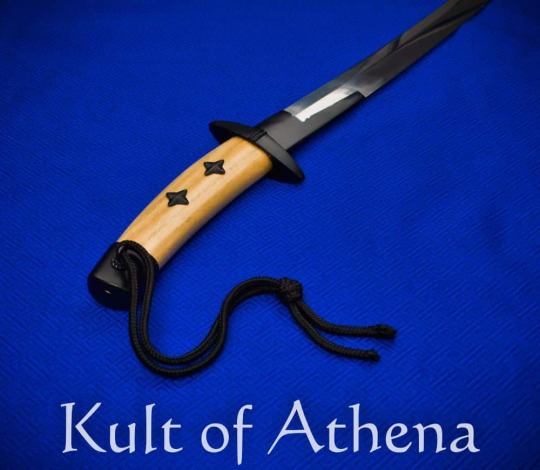
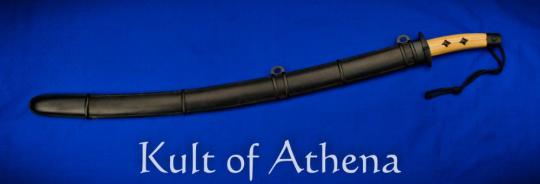
LK Chen – Yuan Mongolian Saber
Yuan Dynasty 1271-1368 was a time when China was a part of the bigger Mongolian Empire spanning from the eastern coast of China all the way to part of Europe today. This is a time of international travel via land and sea, the time when the Italian traveler Marco Polio visited China and years later wrote about his adventures. This a time when people from Eurasia and Arabic countries come to live, work and settle in China and their influence can be seen in this sword design dating to the time of the Yuan. The Mongolian saber has the characteristics of Eurasian Steppes curved saber and was a milestone in Chinese weaponry where curved swords with characteristically saber like blades were introduced to the Chinese. The sword was ideal for quick strikes from mounted cavalrymen and well capable of inflicting deep cuts and slashes from horseback.
The blade of LK Chens informed and scholarly reproduction of this iconic sword is crafted from sharp and well tempered GB 60Si2MnA High Carbon Manganese Spring Steel. The long blade collar is crafted from iron, as are the guard and pommel. The grip is well-polished wood and the sword is sturdily mounted into the hilt with a peen on the pommel and some rivets. The sword is paired with a wood-core scabbard which is bound in faux black leather and completed with blackend brass fittings.
#Kult of Athena#KultOfAthena#New Item Wednesday#LK Chen#Yuan Mongolian Saber#sword#swords#Dao#weapon#weapons#blade#blades#Chinese Swords#Chinese Weapons#Asian Swords#Asian Weapons#Yuan Dynasty#13th century#14th century#Mongolian Empire#saber#GB 60Si2MnA High Carbon Manganese Spring Steel#Battle Ready
5 notes
·
View notes
Text
Headcanon #753
The Treasures of Ruin cause so much destruction because they’re enraged about being stolen from their home region by the Paldean Empire in the 17th century.
#submission#pokemon#treasures of ruin#pokemon headcanon#Not that it was implied here but I really hate it when people pretend artifacts from other regions wouldn't be stolen during conquests#i wonder what was taken during the Mongolian Empire#or the ottoman empire#What did the Barbary pirates take?#but you do you by pretending the hands of other side are clean#“But Spices” Yeah they were used by the wealthy until the common folk started using them and the rich started pushing the natural flavor b#edited for historical accuracy#the Spanish empire did not reach that far east but they still went to china at some point
28 notes
·
View notes